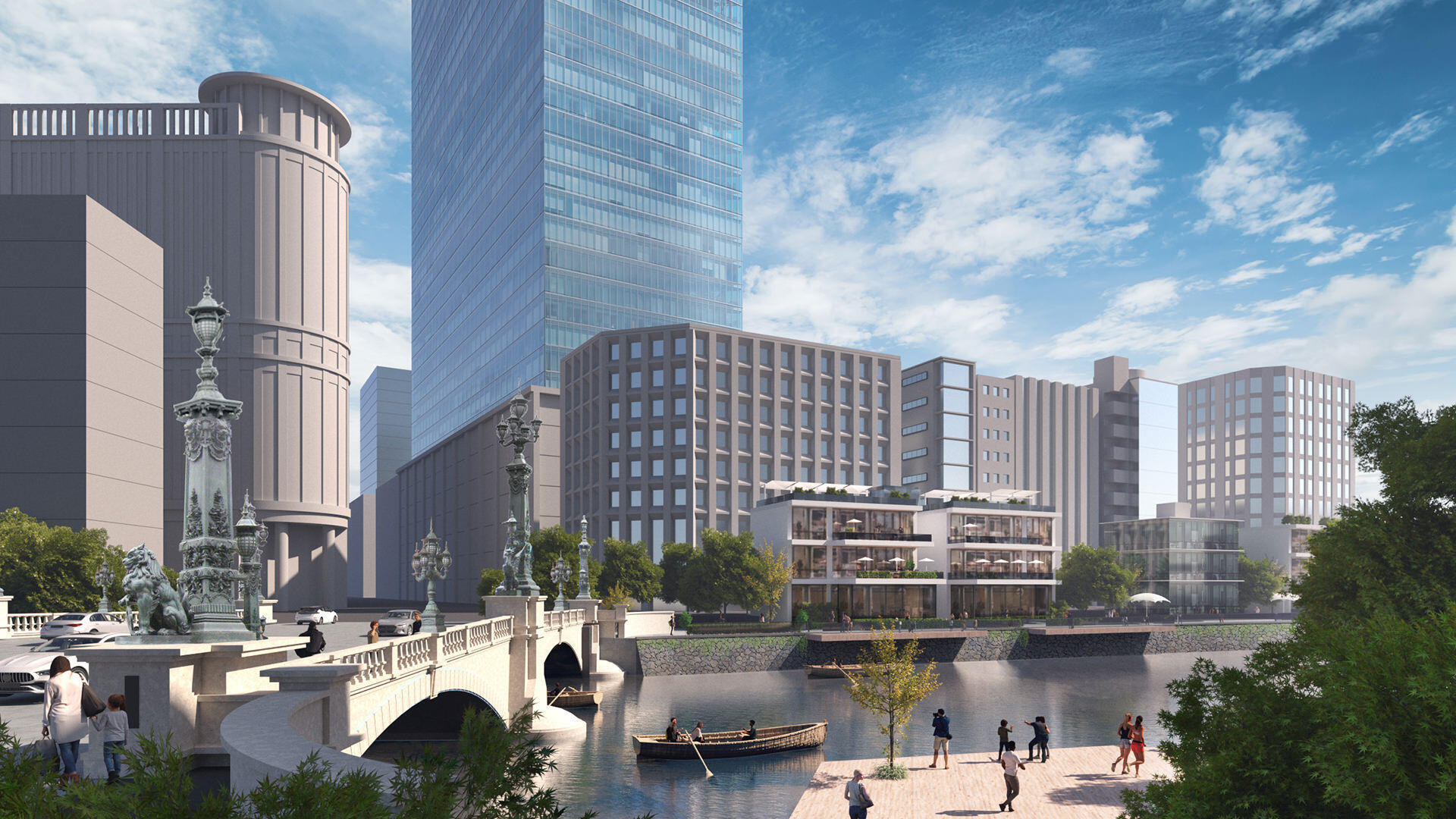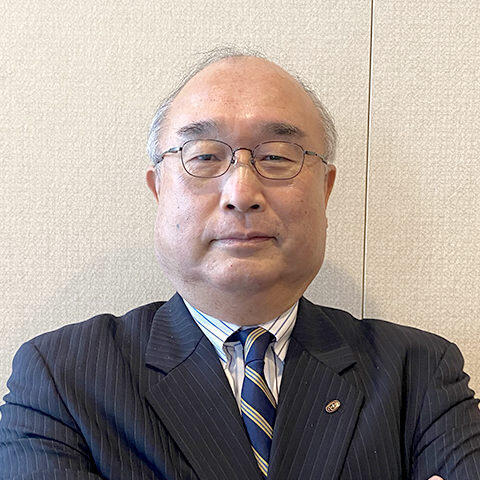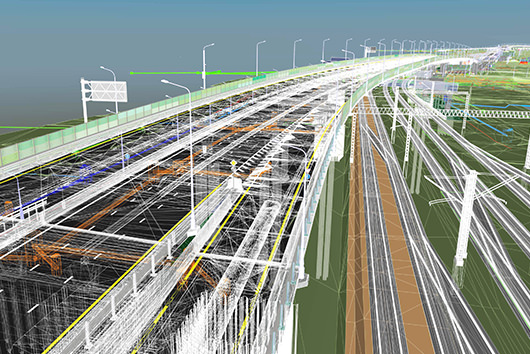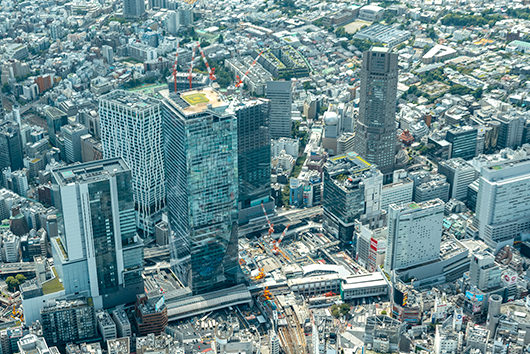INDEX
- Thoughts on infrastructure development through Metropolitan Expressway Nihonbashi Underground Project
- The Nihonbashi Underground Project marks a turning point for the integrated development of town, river, and roads
- Underground Project for the Nihonbashi Section goes beyond the boundaries of conventional infrastructure development
- A strategic approach to underground construction that combines multiple technologies
- Our comprehensive technical capabilities demonstrated in Underground Project for the Nihonbashi Section
- The Nihonbashi Project and what a consultant should be for project-based business
- ★Nihonbashi Then and Now Extra Edition★
Thoughts on infrastructure development through Metropolitan Expressway Nihonbashi Underground Project
Within complex constraints, we have supported the promotion of projects by formulating the social significance and appropriateness of infrastructure development, promoting design and communication with stakeholders.
The Metropolitan Expressway Nihonbashi Section Underground Construction Project has become a national project that has thrown a stone into the traditional way of updating infrastructure. Underground construction projects, which are subject to significant restrictions on implementation space and business viability, are generally expected to receive a low evaluation under traditional physical evaluation frameworks. However, this project is a bold decision that fulfills the inherent human yearning to restore the dignity and admiration of cities, as well as the blue skies, and is in keeping with the way things should be. It is a project that is in the midst of a paradigm shift that will change the tide of urban development.
This project will likely be evaluated in future generations, but accountability is essential for the development of public infrastructure. Underground Project for the Nihonbashi Section is a project that takes a strong, determined approach to its grand design, including examining the intentions of the Prime Minister, who is the head of a nation, during the project review process.
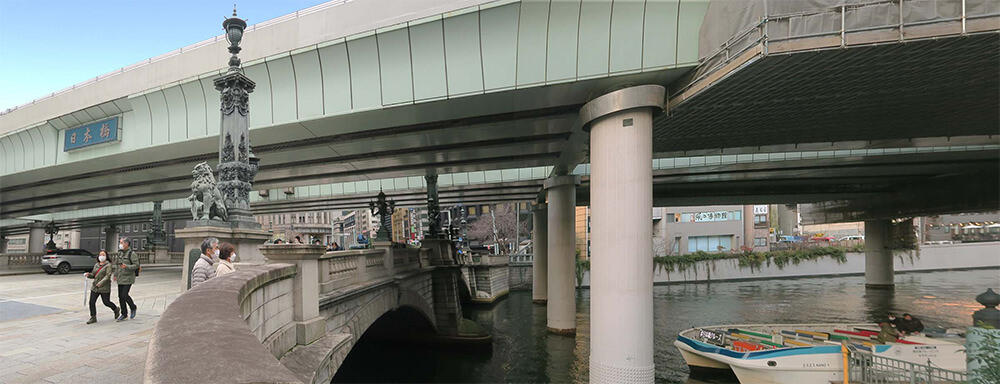
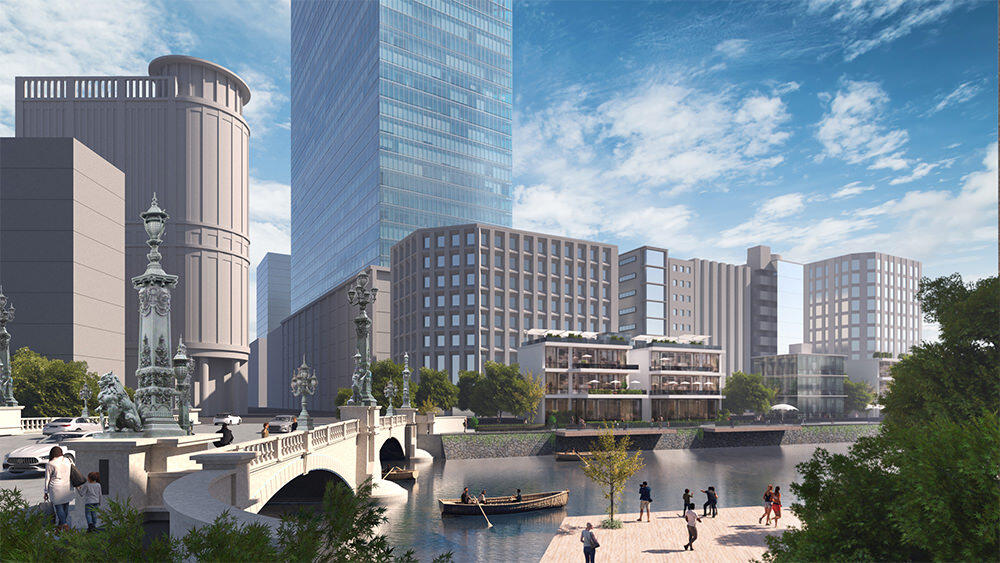
The Nihonbashi Underground Project marks a turning point for the integrated development of town, river, and roads
In 2001, then Minister of Land, Infrastructure, Transport and Tourism, OGI sent a message saying, "We will completely revamp the landscape covered by the elevated Nihonbashi section." In response, many committees considered how to move the Metropolitan Expressway underground under Nihonbashi, and submitted proposals.
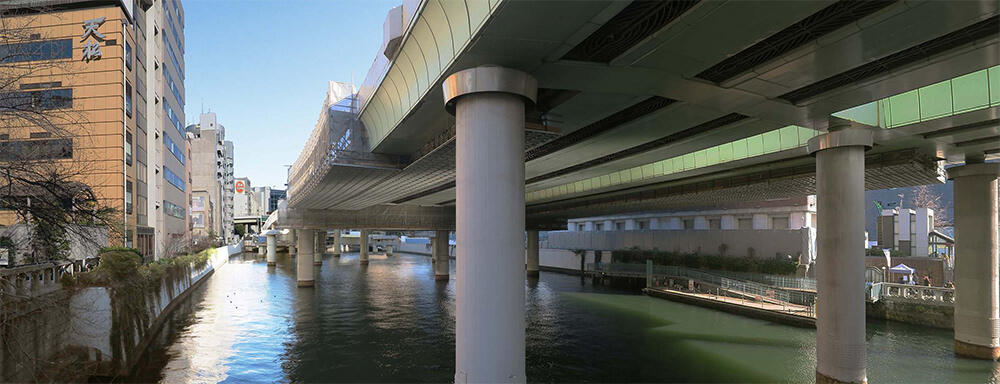
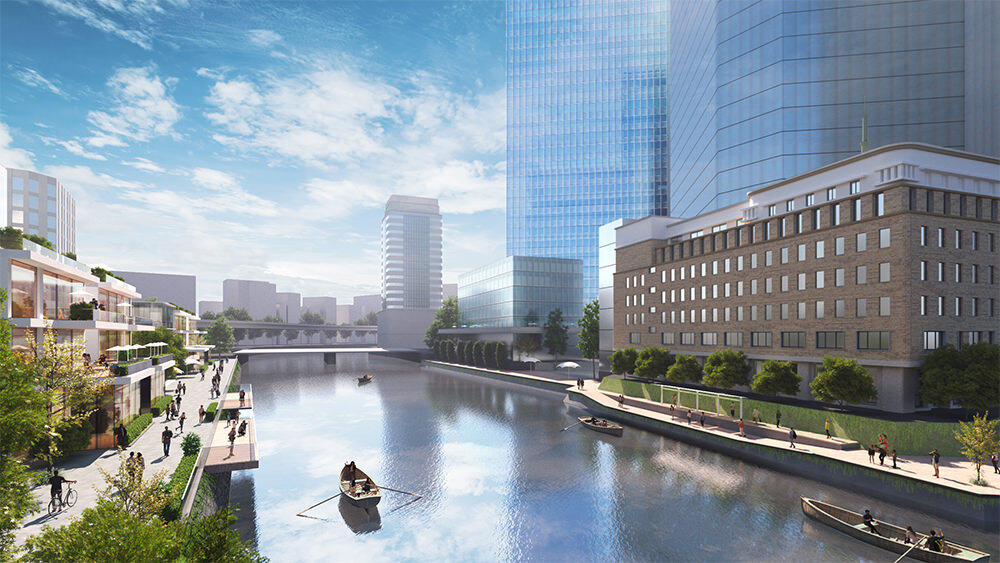
Among these, the proposal "Towards new urban development beginning with the Nihonbashi area" (Reclaiming the Sky over the Nihonbashi River Association: Shigeru ITO, Hiroshi OKUDA, Hideo NAKAMURA, Shumon MIURA) which was based on an inquiry by Prime Minister KOIZUMI in September 2006, made a proposal that went beyond the conventional framework of updating infrastructure alone to linking with urban development, with the private sector taking the lead in urban development and the public sector responding by improving the infrastructure.
The proposal points out the following significance of this project:
- A symbolic project to build a nation with dignity rather than one that prioritizes efficiency
- By developing towns, rivers, and roads in an integrated manner, we will create attractive urban spaces that are vibrant and lively.
- Towards a capital and urban center that the people can feel proud of and that is admired by people abroad
In 2014, Metropolitan Expressway announced a large-scale renewal section, and for the section around Nihonbashi, large-scale renewal of the viaduct, renewal in the above-ground space using the multi-level road system, and renewal underground were all considered. In 2017, Ministry of Land, Infrastructure, Transport and Tourism and the Tokyo Metropolitan Government announced that a large-scale renewal would be carried out by moving the road underground. In particular, "collaboration with urban development" is seen as a major pillar in promoting the project.
Underground Project for the Nihonbashi Section goes beyond the boundaries of conventional infrastructure development
- This is a national project initiated by the government, and is being promoted through an approach that is different from conventional approaches, such as proposing a review scheme and business methods that are linked to urban development.
- In particular, it is notable that it clearly outlines the link between national strategic special zones and infrastructure renewal, and the private sector's business burden scheme, including the application of the multi-level road system. It is truly an advanced initiative that goes beyond the framework of conventional infrastructure development.
A strategic approach to underground construction that combines multiple technologies
- We conduct social evaluations and assess the validity of projects from multiple perspectives, including the future role of Metropolitan Expressway in terms of transportation functions, its impact on the environment, the nature of the business, and collaboration with urban regeneration projects, and we combine a variety of technologies in a comprehensive manner.
- We are pursuing the possibility of creating a project that not only achieves efficiency but also brings dignity and aspiration to infrastructure development.
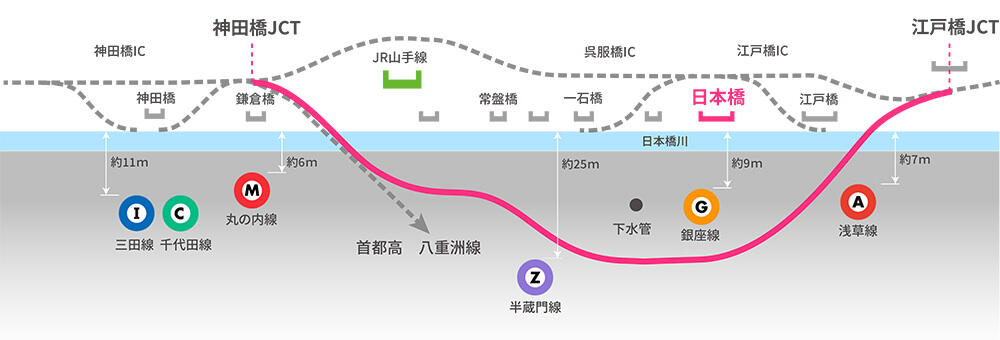
Our comprehensive technical capabilities demonstrated in Underground Project for the Nihonbashi Section
In order to move the current Nihonbashi area of Metropolitan Expressway underground, in addition to the technical knowledge required for updating the existing infrastructure, it was necessary to give full consideration to the social impacts, such as the Metropolitan Expressway 's function as an economic artery, its traffic processing function, the physical space required for its implementation, and how it would be integrated into urban and river development.
Through our work, we are presenting alternatives to these multifaceted impacts and continue to provide decision-making information for undergrounding.
Analysis of traffic impacts using TRANDMEX (Traffic Stimulation System)
In particular, in the feasibility study that is the basis of the underground plan, we used TRANDMEX (Traffic Stimulation System) jointly developed by Metropolitan Expressway and our company to analyze the impact of traffic and to consider the alignment of the road while avoiding congested underground buried objects. In the case of Metropolitan Expressway, a unique linear planning method is used, and our company has inherited the technology we have cultivated over many years to provide optimal linear proposals. We are truly an essential partner and are proud to be in a leading position.
Visualization of the process of moving Nihonbashi underground through the creation of a CIM model
In addition, for specific design considerations, we created a CIM model for Metropolitan Expressway, the first of its kind, for the renewal and construction of infrastructure with congested underground facilities and different management entities, visualizing the process of placing Nihonbashi underground and clarifying the interference status of the construction infrastructure.
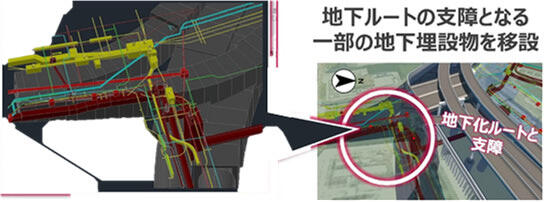

While detailed design conditions, such as coordination with surrounding redevelopment and its relationship with the Nihonbashi River, have yet to be finalized, we are proposing the latest analytical methods and pointing out desirable approaches and risks for the construction of structures aimed at moving the structure underground.
On the other hand, the impact of moving the Nihonbashi section underground on the surrounding environment and the Nihonbashi River is a major issue that must be overcome. We verified whether the undergrounding would have an impact on the subway, lifelines, and surrounding buildings, and at the same time, we verified the maintenance conditions of the Nihonbashi River's channel and the impact during construction (hydraulic aspects) through hydraulic model experiment (since numerical analysis cannot provide sufficient solutions for complex flow shapes).
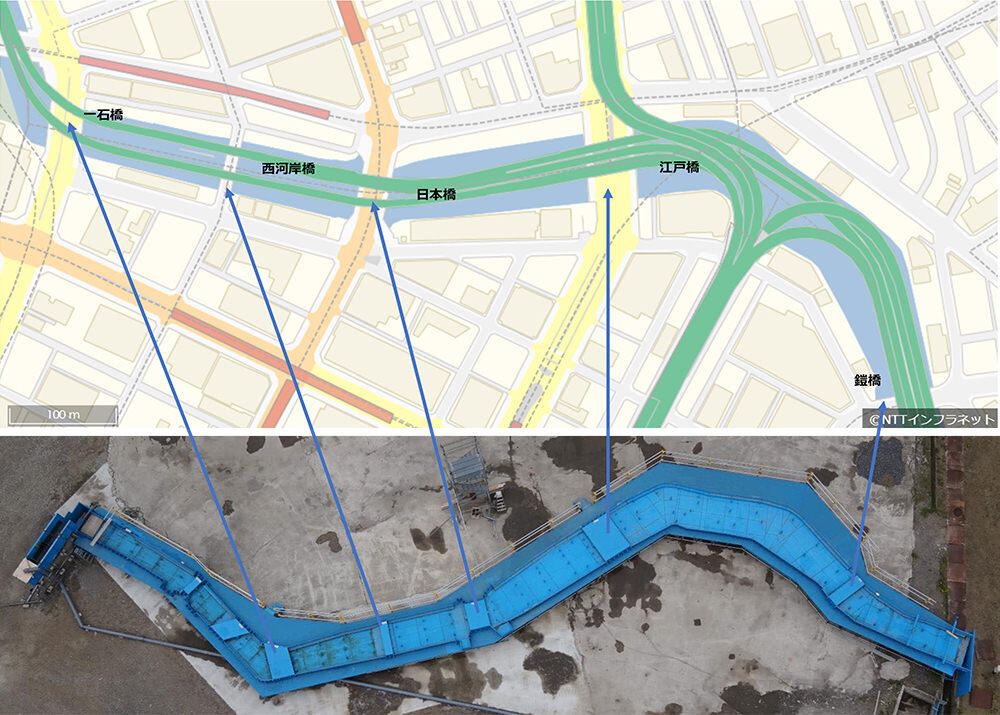
Furthermore, we have established a one-stop system for all the work related to underground construction, including machinery, electricity, and construction, and have been able to handle that work.
We believe that the Nihonbashi Underground Project is truly a project that could only be accomplished by bringing together our comprehensive strengths.
The Nihonbashi Project and what a consultant should be for project-based business
Underground Project for the Nihonbashi Section is visibly progressing, with the lights at Gofukubashi and Edobashi being removed. The final completion of the project, "Bringing the Sky Back to Nihonbashi!", is expected to be around 2040. It's an epic project that will take just under half a century to complete, 40 years after Minister of Land, Infrastructure, Transport and Tourism Ogi's remarks.
Our company has been involved in infrastructure development and renewal from the construction of the central Tokyo circular route in 1963 to the undergrounding of Nihonbashi.
The business scope of consultants has also expanded from individual design support to business feasibility studies (F/S studies), design, maintenance, etc. Furthermore, in recent years, they have expanded into management areas related to business promotion, such as business communication and business supervision.
We believe that it is necessary to provide infrastructure development based on the latest knowledge gained through the deepening of technology in the design field, as well as total system solutions including management and operation. To achieve this, we believe it is important to steadily take on the challenge of developing complex and diverse infrastructure that has never been seen before.
★Nihonbashi Then and Now Extra Edition★
In 2022, work will begin to remove the ramps at Edobashi and Gofukubashi on Metropolitan Expressway Central Circular Route, and in addition to the hammering sounds of the underground movement, a glimpse of the blue sky can be seen from the Nihonbashi River. In addition, the Torch Tower has appeared in D Area o the Tokiwabashi District, and in the Nihonbashi-Naka District at the foot of Nihonbashi, redevelopment projects (such as the demolition of existing buildings) are progressing in coordination with the underground movement project.
Needless to say, Nihonbashi is where the origin marker of Japan's roads (the starting point of the national highway) is located, but the surrounding area also includes Gofukucho and Hatchobori, which appear in historical novels. Also, the Japan Stock Exchange, the headquarters of Kabutocho, famous for Shishi Bunroku's "Daiban" and Shimizu Ikko's "Novel Kabutocho", is nearby. The Bank of Japan's head office, rumored to have a circular roof (although this is actually a coincidence), is also within walking distance.
Seeing is believing! Come and experience the dynamism of urban regeneration around Nihonbashi and imagine the scene when Metropolitan Expressway Expressway viaduct is removed. It's exciting.



